Designing an eco-friendly space doesn’t require a complete overhaul; incorporating sustainable design principles into your home or office can be achieved through simple yet impactful choices. This article explores practical and stylish eco-friendly design tips applicable to any space, covering sustainable materials, energy efficiency strategies, and waste reduction techniques. Discover how you can create a beautiful and environmentally conscious environment by embracing green design practices for a healthier planet and a more harmonious living experience. Learn how to minimize your environmental footprint while maximizing style and comfort.
Reclaimed Wood Furniture
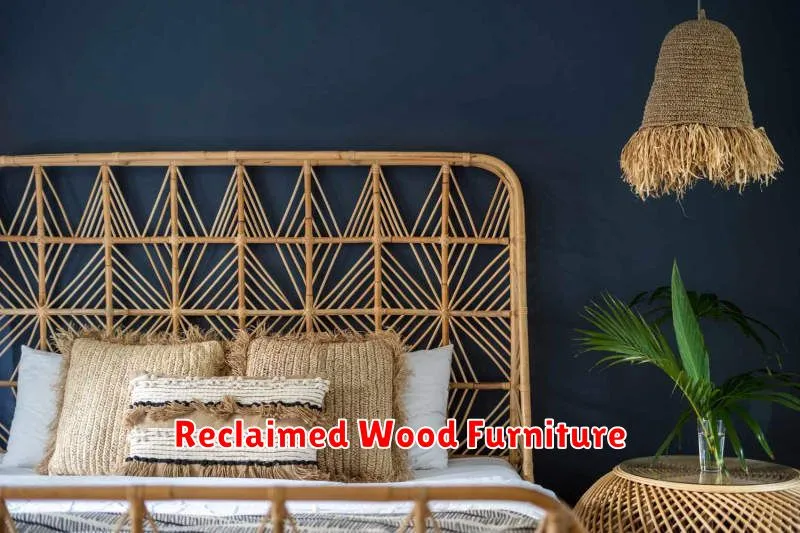
Reclaimed wood furniture offers a sustainable and stylish approach to interior design. By utilizing wood salvaged from demolition sites, old barns, or other sources, this furniture minimizes the environmental impact of new lumber production. The unique character of reclaimed wood, with its varied textures and natural imperfections, adds a rustic charm to any space.
Choosing reclaimed wood furniture contributes to reduced deforestation and lowers carbon emissions associated with manufacturing new wood products. It also often involves less energy consumption during the manufacturing process compared to creating new furniture from raw materials. This makes it a strong choice for environmentally conscious consumers.
The durability of reclaimed wood often surpasses that of newly manufactured wood, offering a longer lifespan for your furniture. This longevity reduces the need for frequent replacements, further contributing to its eco-friendly nature. Consider the source and certification of the reclaimed wood to ensure ethical and sustainable practices.
Bamboo Flooring
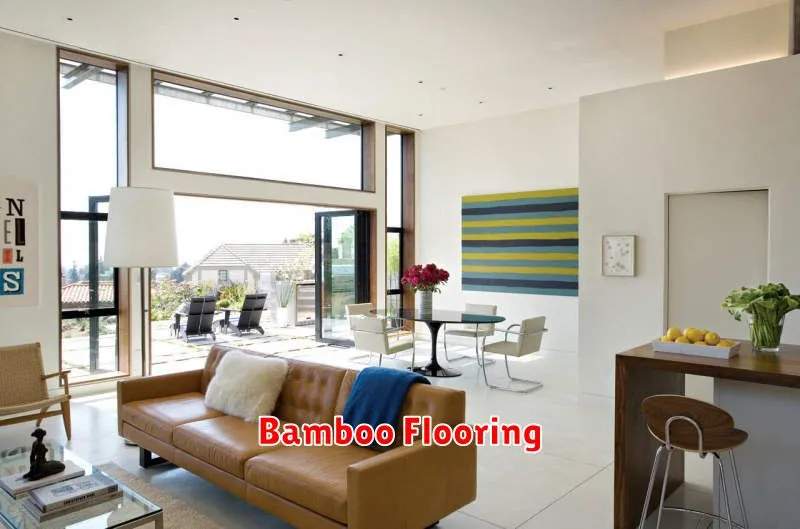
Bamboo flooring offers a sustainable and stylish alternative to traditional hardwood. A rapidly renewable resource, bamboo requires less water and pesticides than many hardwoods, making it an environmentally responsible choice for your home. Its durability and natural beauty contribute to a long-lasting, aesthetically pleasing floor.
Beyond its environmental benefits, bamboo flooring boasts several practical advantages. It’s surprisingly strong and resistant to scratches and dents, while also being relatively easy to maintain. Numerous finishes and colors are available to suit various design aesthetics, seamlessly integrating into modern or traditional spaces. Consider the strand woven bamboo variety for enhanced durability.
When selecting bamboo flooring, prioritize sustainably harvested and responsibly manufactured products. Look for certifications from reputable organizations to ensure the flooring meets high environmental standards and ethical sourcing practices. This will minimize your environmental impact and guarantee a quality product that lasts for years to come.
Energy-Efficient LED Lighting

Switching to LED lighting is a significant step towards eco-friendly design. LEDs consume significantly less energy than incandescent or fluorescent bulbs, resulting in lower electricity bills and a reduced carbon footprint. Their long lifespan also minimizes waste from frequent bulb replacements.
Consider the lumens (brightness) and Kelvin (color temperature) when selecting LEDs. Higher lumens indicate brighter light, while Kelvin determines the color, ranging from warm white to cool white. Choosing the appropriate light for each space optimizes energy use and creates the desired ambiance.
Smart lighting systems offer further energy savings. These systems allow for automated control of lights, enabling scheduled dimming or switching off based on occupancy or time of day. This level of control enhances efficiency and provides additional convenience.
Recycled Glass Decor Items
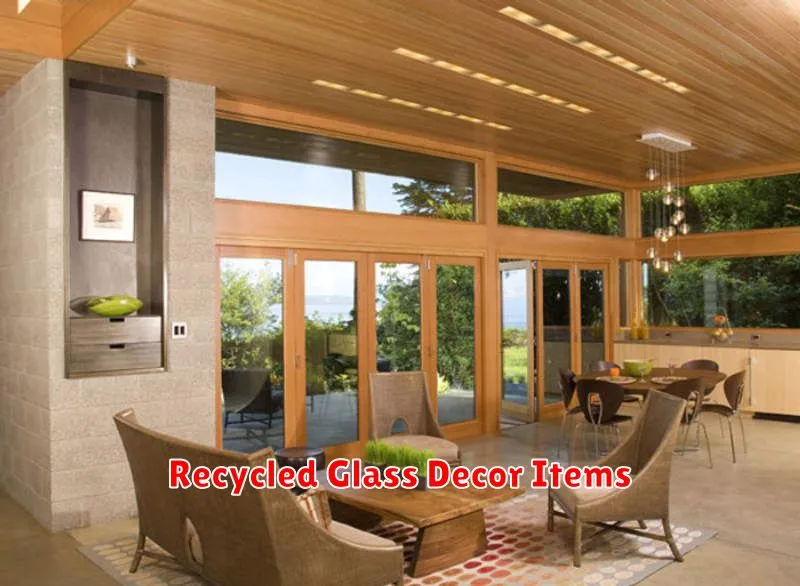
Incorporating recycled glass into your decor is a fantastic way to embrace eco-friendly design. Numerous options exist, from decorative bowls and vases crafted from crushed glass to unique lighting fixtures showcasing the material’s inherent beauty. These items offer a sustainable alternative to new products, reducing landfill waste and minimizing the environmental impact of your design choices.
The aesthetic appeal of recycled glass is undeniable. The varied textures and colors present in recycled glass create visually interesting pieces that add character and depth to any room. Whether you prefer a rustic, modern, or eclectic style, you can find recycled glass decor to complement your existing aesthetic. The inherent shimmer and translucence of the glass can also add a touch of elegance and sophistication.
Beyond the visual benefits, choosing recycled glass demonstrates a commitment to sustainable living. By supporting businesses that utilize recycled materials, you contribute to a circular economy and reduce the demand for newly manufactured products. This simple yet impactful choice helps lessen the environmental burden associated with glass production and disposal.
Indoor Vertical Gardens
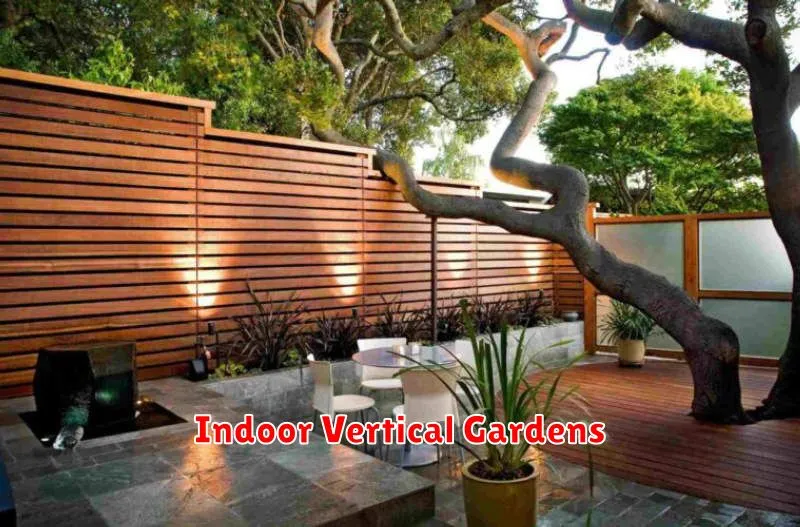
Indoor vertical gardens offer a stylish and eco-friendly way to enhance any space. They maximize limited floor space by utilizing vertical surfaces, allowing for a greater density of plants within a smaller area. This design choice contributes to improved air quality by naturally filtering pollutants and releasing oxygen, thereby promoting a healthier indoor environment.
The aesthetic benefits are significant. Vertical gardens introduce a vibrant, natural element, creating a calming and visually appealing focal point. They can be adapted to suit various interior design styles, from minimalist to bohemian, through the careful selection of planters, plants, and structural elements. The use of recycled or sustainable materials in construction further enhances their eco-friendly appeal.
Creating an indoor vertical garden can be surprisingly simple, ranging from DIY projects utilizing repurposed materials to purchasing ready-made systems. The maintenance involved is comparable to that of traditional potted plants, requiring regular watering and occasional pruning. The rewarding experience of cultivating a thriving indoor garden adds a unique dimension to sustainable living, contributing to both a healthier home and a reduced environmental footprint.
Compostable Plant Pots
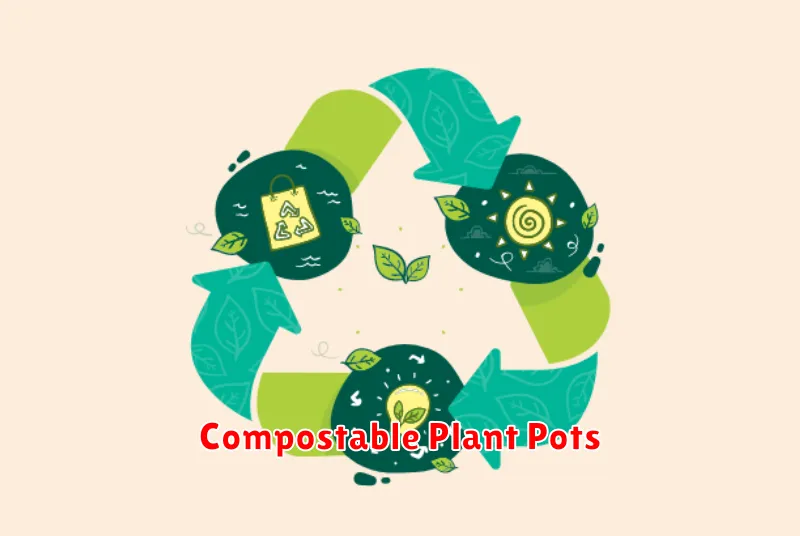
Compostable plant pots offer a sustainable alternative to traditional plastic containers. Made from materials like peat, coconut coir, or other biodegradable substances, these pots eliminate the environmental burden of plastic waste associated with conventional gardening. They decompose readily, enriching the soil and reducing landfill contributions.
The use of compostable pots aligns perfectly with eco-friendly design principles. They reduce the reliance on non-renewable resources and minimize the impact on ecosystems. Furthermore, the decomposition process introduces valuable organic matter back into the soil, promoting healthier plant growth and reducing the need for chemical fertilizers.
When selecting compostable plant pots, it’s crucial to verify that they are certified as truly biodegradable and compostable. Look for reputable brands and ensure the materials used are safe for your garden and the environment. Choosing these pots is a simple yet effective step toward a more sustainable home and garden.
Solar-Powered Desk Lamps
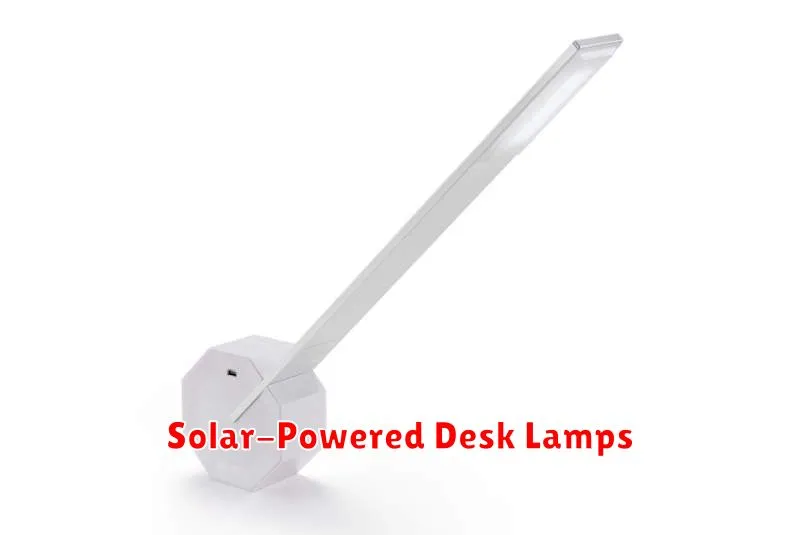
Solar-powered desk lamps offer a sustainable and eco-friendly lighting solution for any space. They eliminate the need for electricity, reducing your carbon footprint and reliance on non-renewable energy sources. These lamps are particularly beneficial in areas with limited or unreliable power grids, providing a clean and efficient alternative.
The design of solar-powered desk lamps is continuously improving, offering increased brightness and longer battery life. Many models incorporate features such as adjustable brightness levels and USB charging ports, enhancing their practicality and versatility. Consider the lamp’s charging time and lumens when making your selection to ensure it meets your specific lighting needs.
By choosing a solar-powered desk lamp, you contribute to a greener lifestyle while enjoying the benefits of convenient and environmentally responsible illumination. Their portability and energy independence make them ideal for various settings, from home offices to outdoor spaces, promoting a sustainable design aesthetic.
Water-Saving Bathroom Fixtures
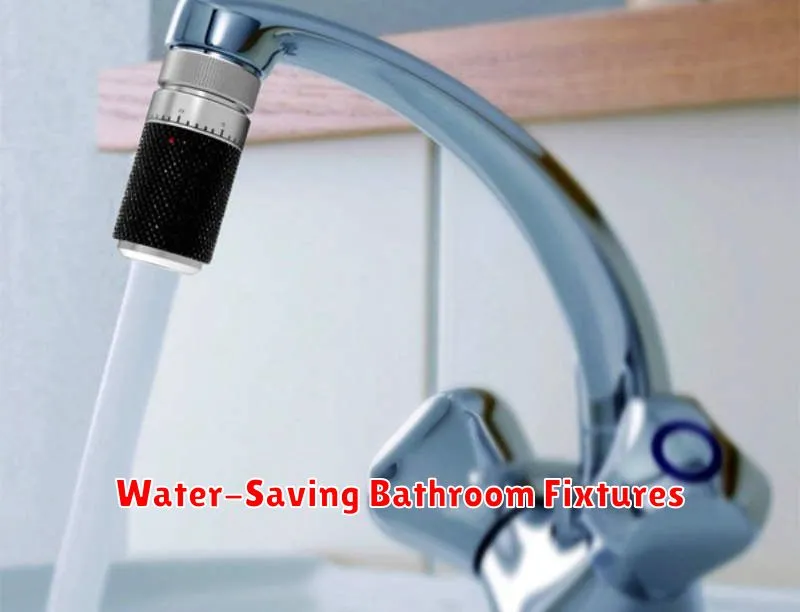
Implementing water-saving bathroom fixtures is a crucial step in creating an eco-friendly bathroom. Low-flow showerheads and faucets significantly reduce water consumption without compromising performance. Look for fixtures with the WaterSense label, indicating they meet EPA criteria for water efficiency. These fixtures use less water while maintaining adequate water pressure.
Toilets represent a large portion of household water usage. Consider upgrading to a high-efficiency toilet (HET) which uses significantly less water per flush than older models. Look for models with a low gallons per flush (gpf) rating, ideally 1.28 gpf or less. Dual-flush toilets offer further water savings by allowing you to choose between a half-flush and a full-flush option based on your needs.
Beyond specific fixtures, adopting water-conscious habits complements the impact of efficient plumbing. Simple measures such as shorter showers, turning off the tap while brushing teeth, and repairing any leaks promptly, enhance water conservation efforts substantially. By combining efficient fixtures with mindful water usage, you can create a truly eco-friendly bathroom.
Upcycled Wall Art
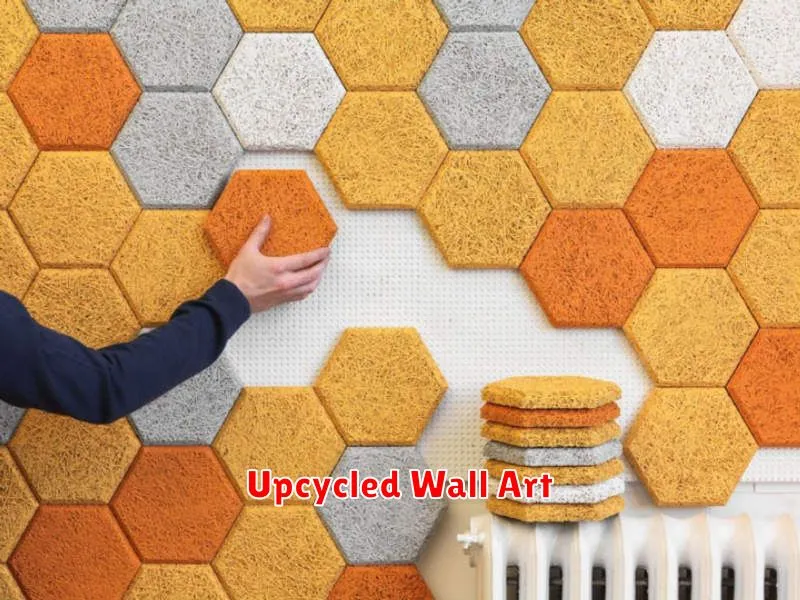
Incorporating upcycled wall art is a fantastic way to enhance your space’s eco-friendliness. This involves transforming discarded materials – such as old windows, reclaimed wood, or recycled metal – into unique and visually appealing pieces. The process not only reduces waste but also adds a distinctive, personalized touch to your decor.
Consider creating a statement piece from repurposed materials. For example, an old pallet can be transformed into a rustic shelf, or broken ceramic plates can be arranged to form a mosaic. The possibilities are virtually limitless, depending on your creativity and the available materials. Remember to prioritize safety when working with reclaimed materials, ensuring any sharp edges or potential hazards are properly addressed.
By embracing upcycled wall art, you contribute to a more sustainable lifestyle while simultaneously injecting personality and character into your home. This approach aligns with eco-conscious design principles, promoting resourcefulness and reducing environmental impact. The resulting artwork offers a rewarding sense of accomplishment and a unique conversation starter.
Low-VOC Paints for Walls
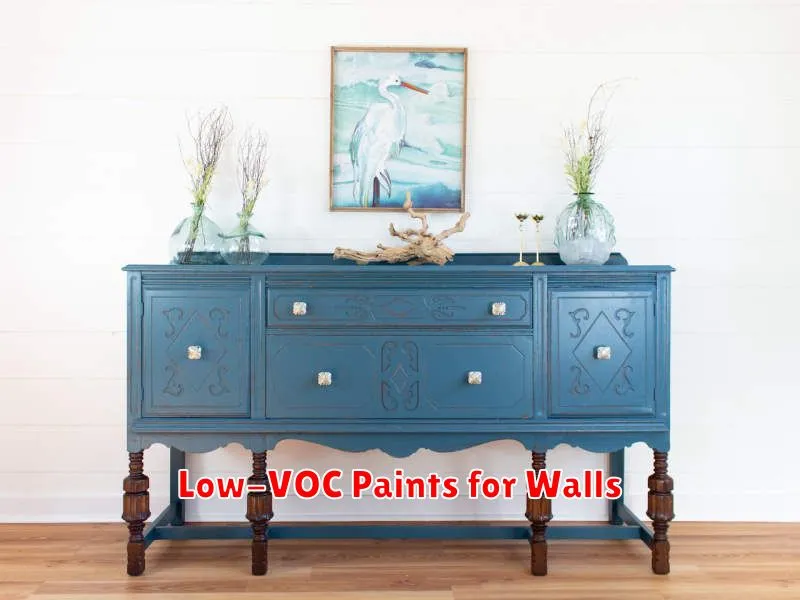
Choosing low-VOC (volatile organic compound) paints is a crucial step in creating an eco-friendly interior. VOCs are chemicals released into the air during painting, contributing to poor indoor air quality and potential health problems. Opting for paints with low or zero VOC content significantly reduces these emissions, creating a healthier environment for you and your family.
Many brands now offer low-VOC or zero-VOC paint options, often labeled as “green” or “eco-friendly.” When selecting a product, carefully review the product label for VOC content, looking for certifications or statements that verify low-VOC levels. Consider factors like the paint’s durability and washability; even eco-friendly paints should provide adequate performance.
Beyond VOCs, consider the overall environmental impact of the paint. Look for paints made with recycled materials or from sustainable sources. Proper disposal of leftover paint is also important for minimizing environmental harm. Contact your local waste management facility for guidance on responsible disposal practices.

